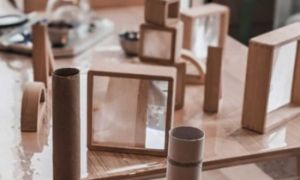Supporting schemas through meaningful and engaging experiences helps nurture children’s natural learning processes. The following article provides activity ideas for incorporating schema-focused activities into the learning environment.
Children exploring this schema enjoy activities involving motion or straight paths.
-
Experiences:
-
Setting up marble runs or ramps for cars.
-
Providing paintbrushes for sweeping lines or patterns on large sheets of paper.
-
Organizing outdoor games involving throwing or rolling balls.
-
2. Rotation Schema
For children fascinated by circular movements, these activities encourage learning:
-
Experiences:
-
Playing with spinning tops, pinwheels, or hoops.
-
Using turntables or circular stamps during craft time.
-
Engaging in dance activities that involve spinning movements.
-
3. Enclosure/Enveloping Schema
Children displaying this schema enjoy covering or enclosing objects.
-
Experiences:
-
Building forts or enclosures with blankets and cushions.
-
Wrapping toys in fabric or paper.
-
Filling shoeboxes or containers and stacking them to create "walls."
-
4. Transporting Schema
This schema involves moving objects from one place to another.
-
Experiences:
-
Providing child-sized wheelbarrows or baskets for carrying toys.
-
Setting up treasure hunts where children collect items and transport them to a “home base.”
-
Using sand buckets and shovels to move sand, water, or small toys.
-
5. Connection Schema
Children exploring connections enjoy joining or linking objects.
-
Experiences:
-
Building with LEGO or magnetic tiles.
-
Encouraging threading with beads or string.
-
Providing toy train sets with tracks to assemble and connect.
-
6. Positioning Schema
This schema involves arranging objects in specific positions or patterns.
-
Experiences:
-
Using sorting trays and small objects to arrange by size, shape, or color.
-
Exploring puzzles or mosaics.
-
Encouraging stacking activities like creating block towers.
-
7. Transformation Schema
Children exploring transformations are drawn to observing changes in objects or substances.
-
Experiences:
-
Conducting simple science experiments like mixing colors or watching ice melt.
-
Encouraging sensory play with water, sand, or slime.
-
Exploring cooking activities where ingredients transform, such as making dough or smoothies.
-
8. Orientation Schema
-
Definition: Involves exploring different perspectives or angles.
-
Activities:
-
Provide mirrors for children to explore reflections and view objects from various angles.
-
Encourage “upside-down” play, like looking at the world through their legs or lying on the ground to observe the ceiling.
-
Use ramps or inclines to see how objects move at different angles.
-
9. Containment Schema
-
Definition: Focuses on placing objects inside other objects or creating boundaries.
-
Activities:
-
Set up stacking and nesting toys.
-
Encourage filling and emptying activities using boxes or jars with lids.
-
Provide cardboard boxes for children to climb in, decorate, or turn into play spaces.
-
10. Transformation Schema
-
Definition: Explores cause and effect or changes in materials.
-
Activities:
-
Engage children in sensory play with clay, playdough, or slime.
-
Conduct simple science experiments, like mixing baking soda and vinegar to observe reactions.
-
Explore cooking activities where ingredients change, such as making pancakes or smoothies.
-
11. Cause-and-Effect Play
-
Support any schema by introducing activities where children can observe the results of their actions:
-
Use pop-up toys or toys with levers and buttons.
-
Provide instruments like drums or xylophones to explore sound production.
-
Encourage water play with pouring tools to see how water moves and flows.
-
12. Outdoor Explorations
-
Integrate schemas into outdoor activities, such as:
-
Collecting leaves or rocks to transport or arrange (transporting or positioning schemas).
-
Observing spinning objects like pinwheels or throwing Frisbees (rotation schema).
-
Building stick enclosures or forts (enclosure schema).
-
13. Group Projects
-
Foster collaboration while supporting schemas:
-
Create a large mosaic (positioning schema) as a group.
-
Build a cardboard city with roads and enclosures (trajectory, enclosure, and positioning schemas).
-
Conduct a "sensory potion-making" project where children mix materials (transformation schema).
-
Further Reading
A Guide To Schemas
Incorporating Theorists Into Early Childhood Documentation
Child Initiated Learning
Pedagogical Approaches In Early Childhood
EYLF Practices And Strategies To Implement Them


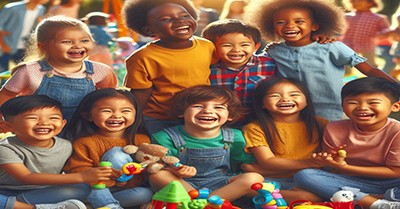




 Open ended questions cannot be responded to with one word answers such as yes or no. These types of questions enables a child to provide
Open ended questions cannot be responded to with one word answers such as yes or no. These types of questions enables a child to provide During your child’s preschool years, an important milestone begins to emerge. This is the development of pre-writing skills. Pre-writing skills are used to encourage, develop
During your child’s preschool years, an important milestone begins to emerge. This is the development of pre-writing skills. Pre-writing skills are used to encourage, develop Open ended materials enables children to play freely. They are objects that have no rules to follow, use or function. Raw materials that can be
Open ended materials enables children to play freely. They are objects that have no rules to follow, use or function. Raw materials that can be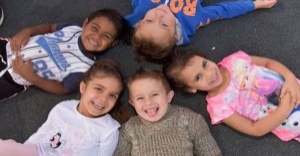 An Acknowledgment of the Country is a way of showing respect for the Traditional Owners and can be given by both non-Indigenous people and Aboriginal
An Acknowledgment of the Country is a way of showing respect for the Traditional Owners and can be given by both non-Indigenous people and Aboriginal Language plays an important role in a child’s development. It enables a child to communicate effectively with their family, learn at school, socialize with friends,
Language plays an important role in a child’s development. It enables a child to communicate effectively with their family, learn at school, socialize with friends,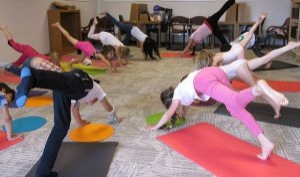 Like adults, children have to deal with their own stress in life. Moving house, starting a new school, preparing for a new sibling - these are
Like adults, children have to deal with their own stress in life. Moving house, starting a new school, preparing for a new sibling - these are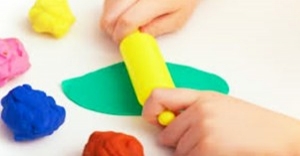 Playdough is such a versatile material. It provides numerous benefits to children as they manipulate it, it is safe and soothing and provides children with
Playdough is such a versatile material. It provides numerous benefits to children as they manipulate it, it is safe and soothing and provides children with Teaching children about sustainability enables them to appreciate and respect the natural environment. Early childhood services can provide meaningful hand on learning experiences in order
Teaching children about sustainability enables them to appreciate and respect the natural environment. Early childhood services can provide meaningful hand on learning experiences in order Recycling is an important concept that teaches children to care for the environment. It encourages children to be responsible and show a growing appreciating for
Recycling is an important concept that teaches children to care for the environment. It encourages children to be responsible and show a growing appreciating for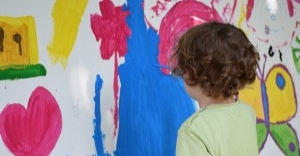 When children apply paint to paper, glue things together, or pound a lump of clay, they experiment with colour, shape design and texture.
When children apply paint to paper, glue things together, or pound a lump of clay, they experiment with colour, shape design and texture.
